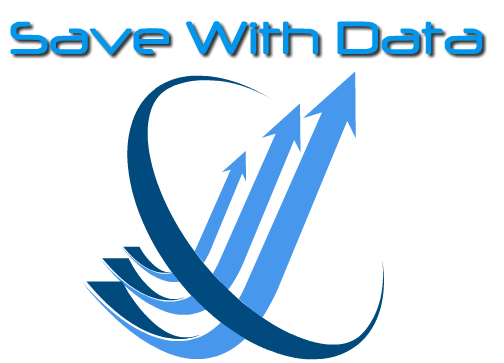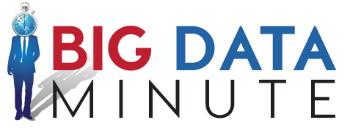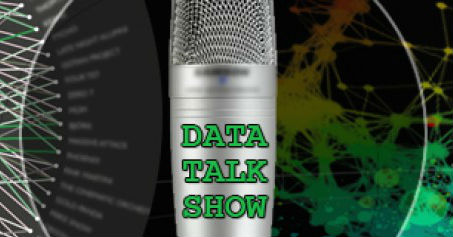
by Aleah Radovich | Feb 22, 2016 | Business Optimization, Internet of Things, Measuring Results
It seems that with the rise of the Big Data Revolution, data creation and data analysis is being utilized in almost every facet of our lives, our devices and our businesses.
Where is it likely to pop up next? The author of this article, Aleah Radovich predicts that it will soon be saving recruiters more than just time! Big Data can be utilized to find “…a match made in heaven.” Companies can identify the perfect candidates, and even candidates that may be more likely to accept an offer.
Here is the intro of the article. You can also Read the Full Article Here.
‘”People that watched ‘Skyfall’ were also interested in ‘The Bourne Identity.'”
We receive suggestions on what movies to watch, what we might like to listen to next and what we would like to buy. Five years ago, it was Amazon alone that used the recommendation system. Today, every company who is a somebody is using it.
So, what Amazon and Netflix do today, we may very well see human resources departments in every company doing tomorrow. The process has always relied upon referrals and recommendations, but now these recommendations are likely to come from our computer screens. We may statements like: Companies interested in Person X were also interested in Person Y.”
Read Full Article Here.

by Stephanie Rabinowotz | Jan 6, 2016 | Measuring Results, Save With Data
With every new year comes new ideas, goals and budgets, which is why now is the perfect time to plan out your company’s finances. Big Data is a great addition to any financial services you may be using in your business!
Big Data opens financial planning up to managing pricing, customer insight, investment advice and risk management. Financial services usually help companies manage their money and predict the best ways to use it in the future, but when coupled with Big Data, financial planning can be taken to a new level. Big Data provides the insights to see the use and effect of your money in ways financial services cannot provide alone.
This is one industry that Big Data has barely touched, but is ready to dive into! Many reports foresee Big Data becoming an increasingly utilized tool in the financial sector. Big Data is brand new in this field, but has the potential to provide insights that wouldn’t otherwise be seen. The sooner we can notice trends about finances the more money that can be saved.
To learn more about how Big Data is infiltrating financial services check out this awesome article- Big Data Puts Bacon On The Table

by Stephanie Rabinowotz | Nov 2, 2015 | Case Studies, Measuring Results
The Salvation Army is a Christian based international movement that has been helping those in need since the 19th century. When the Salvation Army began they were in small towns, making it easy to determine who was in need of their assistance. Now that the movement is international, it is much more complicated to determine the areas most affected by poverty.
The Salvation Army has recently teamed up with the Indiana University Lilly Family School of Philanthropy to combine the Salvation Army’s service data with the University’s analytics to provide a more accurate Human Needs Index. The Human Needs Index shows us where there is the most poverty and breaks that poverty down into different indicators that allow us to best assist those in need. The Human Needs Index is based on seven needs variables consisting of meals, groceries, housing, clothing, furniture, medical bills, and energy bills.
Instead of determining if an area is impoverished based on income, the Human Needs Index takes it to a different level by finding out why the area is struggling and how they can best help each individual family. This deeper look prevents organizations with good intentions assisting people in ways they don’t need help, such as giving a family clothes when they really need help with their medical bills.
With the Salvation Army providing large amounts of data on those in need and the University analyzing it to break it down into specific conditions, we are getting a much more accurate, almost real time, look at poverty. These insights allow us to track poverty trends affected by public policies and also determine where service efforts are actually making a difference.
The use of Big Data in philanthropy is leading to incredible progress in the mission to aid those in need. There are so many people who need help getting back on their feet and the fact that Big Data is being used to display individual needs is a huge step in the right direction. Many individuals struck by poverty feel as though they are not seen, which is why it is incredibly meaningful when an organization such as the Salvation Army can aid a family with the specific help they need.
Read how else Big Data is helping people! This great article on Energy Usage describes how Big Data can save you money on your next energy bill!

by Stephanie Rabinowotz | Oct 20, 2015 | Measuring Results
Big Data has become very popular and therefore is being made into a “hype”. The Big Data hype gives the impression that Big Data is a magical tool that can be implemented into any company and voila!- instant solutions to all problems. Society has started to place unrealistic expectations on Big Data and the results it can produce.
It is human nature to project our interests onto others. Like the football dad who never made it to the big leagues, companies also place their desires into their data. This is why studies and surveys are supposed to be objective, because as soon as someone biases the data, the results are compromised. Big Data takes a long time to be analyzed properly to find relationships that can be translated into valuable information. When companies jump at the first correlation because it is in line with their desired result is when Big Data becomes biased.
It is extremely important to ensure your data is clean, or else it is going to lead to a lot of wasted money. Companies buy into the Big Data hype, purchase expensive big data technologies and hope that it is going to magically reaffirm all of their dreams and provide a golden staircase to them. This is not how it works.
Big Data is essentially a lot of information. When looking at a lot of information you cannot form a conclusion by simply looking at a portion of it. You must consider every piece of information and how it fits together. This is where Data science comes in. Many are moving away from the term “Big Data” because of the hype surrounding it and are embracing data science. Data science speaks more to the volume of analytical scrutiny big data must go through to provide any useful and unbiased results.
This is why we have data scientists, they are the geniuses who can look through mass amounts of data and find correlations without biasing them. If a company is going to spend the money on implementing big data they must also hire data scientists if they hope to profit from their investment.
The take home point to this would be that companies must allow the data to create new ideas and not try to drive the data with their own thinking.

by Tara Buck | Oct 18, 2015 | Big Data, Business Optimization, Measuring Results, Save With Data
There is data that can be found in every industry and profession out there- from healthcare to professional sports. If the legal profession is meant to be involved in all of these as well, one question comes to the front of my mind: how can big data help the legal profession?
Let’s start of by stating that there is so much data being collected around the world, and depending on how it is stored, catalogued and indexed, it can take a person days or weeks to sort through. Thankfully in today’s world, however, we have the luxury of programs and computers- computers that can go through this data instantly. Having these programs and applications accessible to us can instantly bring down the cost of analyzing the data, provided you get it into the right format.
Let’s take an example of a case involving product liability. There is a product that is defective. Where does big data come in?
Well now you have all of the records from the creation of that product: the memos, the mockups, and drawings. You have everything that had to do with the end product. You may even have the reviews and testimonials- good or bad. What would have taken months to go through by hand may now take an hour with some computer application. This is because the computer is going to search for certain words, and if the attorney picks the right words and the data is set up in the right format, the attorney now has everything they need at their fingertips. And all in a matter of minutes!
One may think it would be enough as an attorney to go out there and say ‘this product is defective and here are 500,000 complaints about it.’ The reality is that you can actually go one step further with the tools that are now given to us. The attorney can go back into all of the 500,000 complaints and determine what the common component is- and maybe that common component is user error. Then the tables suddenly turn and it is not the product- it is the user!
Big data can now help lead attorneys to answers that they may have never gotten a chance to come to with time and money constraints. Whatever side may be benefitting, information is power and big data is providing just that!

by Stephanie Rabinowotz | Oct 12, 2015 | Measuring Results
With the Chicago Cubs and the St. Louis Cardinals playing in Game 3 of the MLB playoffs tonight, fans are eager to see who breaks the 1:1 tied score. Whoever wins tonight’s game will be one step closer to playing in the 2015 World Series. With this kind of pressure how do coaches and managers decide line ups and game time decisions?
Will Matheny and Maddon be using Big Data tonight?
Big Data has been slowly infiltrating the MLB world and is now a heavily relied upon tool for strategic decisions. Systems such as Hitf/x, Fieldf/x, and Pitchf/x capture data from hitters, fielders and pitchers and relay it to the coaches and managers in real time. This allows coaches to not only see the outcome of plays but to get a better idea of what may happen before the play is even done.
The Pitchf/x system records 20 different measurements of every pitch including the angle of the pitchers arm, the speed, location and three dimensional movement of the ball. These types of measurements are what allow the broadcasters to display the strike box in the corner of your screen, showing you real time reports of where pitches were thrown.
Big Data and statistics are not limited to just off season training, but actually being used during the games. Because of these new programs MLB teams can study pitcher/hitter relationships and strategically set their line up and shift their fielders accordingly. The data that is collected and analyzed is also what influences which signals coaches give their hitters.
Thanks to Big Data, managers can more strategically coach players and make better informed trades with more accurate stats, saving time and money. Big Data has also helped capture more fans with better screen graphics, teaching fans about the underlying strategies within baseball.
No matter who wins tonight it is safe to say both teams will be implementing Big Data into their game plan. Hopefully Big Data will continue to grow in the MLB as it has with the NFL.
To learn more about how Big Data is used in the NFL check out this article!












Recent Comments